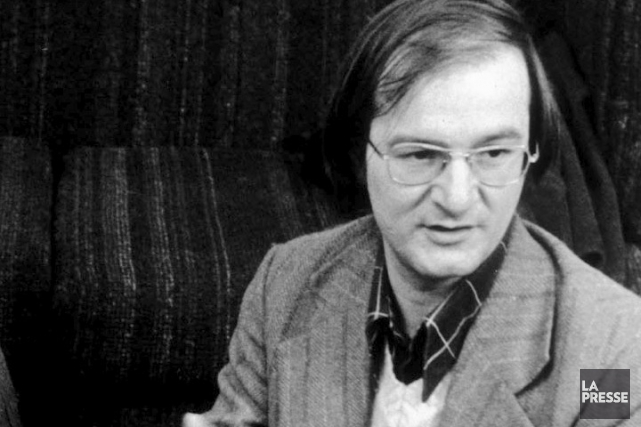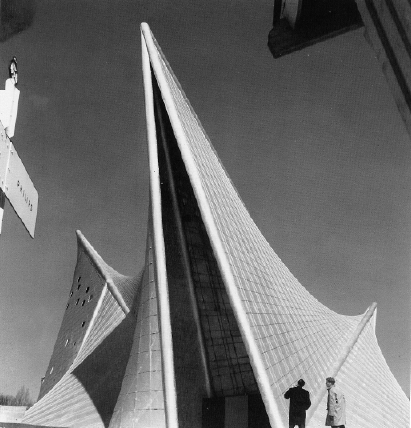This week’s theme is…Odd and Tragic Deaths! Death comes to us all. And most of the time death is pretty routine, run-of-the-mill. Not that death is ever easy, but usually it’s the result of “natural causes”, which is another way of saying “a chronic disease akin to that which most people die of, and not all that interesting”. But sometimes death is traumatic, unexpected and tragic. This week, we look at examples of composers who succumbed to causes such as these
Odd and Tragic Deaths, Day 5 – Zipangu by Claude Vivier

Sometimes it feels like the great composers of Classical music are spoken of like distant legends from a bygone era, obscured by the fog of history, and isolated from the rest of their time and the people around them. Bach. Beethoven. Mozart. Brahms. The names can feel like monuments, freestanding, noble, and indebted to no one, nor bleeding into the next generations. But nothing could be further from the truth. The musicians of the West, like anyone else, were and are profoundly interconnected, crossing paths with each other as often as they could, learning and drawing inspiration from each other, collaborating, and cultivating the skills and sensibilities of the next generation. It’s actually a surprisingly small club and I am perpetually amazed by the stories that exist of the great musicians of our heritage crossing paths. For more about this interconnectivity, see this post.
And, the story is not done. Classical music, or really just music when it comes down to it, is a quintessentially human activity, and the need will always be filled by ambitious souls eager to become successful and connected within their beloved art. And it’s never been easy, nor will it ever be. Musicians have always and will always need to balance a complex set of forces, political, aesthetic and economic. The history of music can be seen as a study in finding solutions to reconcile the answers to all these ever-shifting riddles. And musicians are human, deeply flawed, with personalities, appetites, vices, broken relationships, messy families, and more. In short, there’s no right or wrong way to do music, and the stream still flows through all of us; you are a part of it whether you realize it or not.
There is a continuity which connects anyone making music today to the monks who sang Gregorian Chant (often considered to be the chronological beginning of Western music history studies) to everyone making music today. The contemporary university system and the parallel and interconnected Western concert hall system are considered by many music lovers to be the cultural descendants of Classical music. Many musicians working in these systems can trace their lineage back to the very beginning. While no one survives who knew Beethoven personally, there are those who have experience with the great creative figures of the twentieth century, and even they are fewer than just a few decades ago. I have heard stories about great musicians of the twentieth century, and soon stories will be told about those storytellers.
The continuity might be summed up a little like this…
The Gregorian Chant singers began to layer different voices together to create organum, which turned into the Ars Nova, which eventually became Franco-Flemish polyphony, which found its highest perfection in Palestrina, who was reacted to by the early opera composers, who inspired an entire generation of vocal and instrumental composers to create Baroque music, which became distilled and clarified into Classical music, which became Romantic music as Beethoven expanded its forms and made them extremely personal and introspective, which eventually became extremely chromatic in the hands of the post-romantics to the point that tonality was completely dissolved by the avant-garde composers of the early twentieth century who paved the way for the very colorful and experimental serialism and electronic music of the middle and late twentieth centuries.
There are many composers today who find their heroes in this last group from the middle twentieth century, although their influence is starting to wane. But there are still plenty of stories to be heard and new music to discover from this group.
Perhaps the most colorful figure of this post-war generation that looked to the pre-war serialists for inspiration and ran further with it, was Karlheinz Stockhausen, who died as late as 2007.

His students were active during the earliest years of my life, and probably still are. Stockhausen was just one of the Germans trying to make sense of the crazy world left in the wake of the Second World War. He and his fellow composers in Germany and France looked to the pre-war innovations of Arnold Schoenberg and his disciple Anton Webern, who distilled Schoenberg’s approach even more essentially (see this post), and also to figures like the French Edgard Varese, the composer of some very iconoclastic, out-of-the-box music which explored the power of raw sound, and also an early explorer of composing music using recorded media like as the instruments. You can hear Varese’s seminal, haunting, and ethereal Poeme Electronique, perhaps the first great example of what is known as concrete music, composed for the 1958 World’s Fair in Brussels, and presented in a special pavilion commissioned by the Philips Corporation and designed to house the innovative listening experience by fellow composer and architect, the Greek Iannis Xenakis:

Stockhausen drew in all of these influences, and took the opportunity to study in person with two distinguished French musicians, Olivier Messiaen (with whom he was impressed), and Darius Milhaud (with whom he was less impressed).
He took all of these currents and forged a very inventive, unpredictable, and colorful body of work that explores sound, the way it is produced by musical instruments, and the way it is notated (for more on a composer who also explores notation, see this post and this post) in countless different ways, but always with the irreverence and eccentricity of a mad scientist (for music from another “mad scientist” see this post). Here is a so-so interview with him that will give you something of an idea of this, especially if you are completely unfamiliar:
While certainly not a household name (a fact he probably resented), Stockhausen is an undeniably important figure in the development of music in the twentieth century, impacting many styles, both art and pop. Students flocked to him and his lectures. Pop groups like the Beatles, Kraftwerk, and Can assimilated his ideas about electronic music and sound in general into their musical statements – watch that interview if you haven’t already to make sure you catch the Beatles reference – it’s fascinating (for more about the Beatles, see this post).
And Stockhausen had private students, anchoring them by personal association within the noble stream of Western art music. One of his students, the French Canadian Claude Vivier, generated an intriguing set of works that explore sound in fascinating ways. While Vivier studied with others as well, Stockhausen seems to have had the most powerful and enduring effect on his music and his manner of promoting himself. Listen to this astounding work which draws every possible timbre out of a group of string instruments, evoking both Stockhausen and Penderecki:
For a time, Claude Vivier was enrolled in a school run by monks to prepare boys for the priesthood. He was asked to leave when he was 18, probably because of his homosexuality, a fact about which he was anything but secretive. He was also quite open about the profligacy of his sexual partners and it was this that appetite that ultimately caused him to meet his fate, cutting short a very promising career. In 1983 the 35 year old composer took home with him a 19 year old male prostitute. His body was discovered 5 days later, riddled with multiple stab wounds. The prostitute, Pascal Delza, was a drug addict who had murdered at least two other men in similar fashion.
Vivier, deeply creative, was deeply human, just like the other composers we often revere and monumentize. But it is easier to see the humanity when we are this close in history, understanding the forces at work on his life for better and worse. Whatever is true of his personal life, Vivier is connected to a long and distinguished line of monumental creative talents through his personal association with Karlheinz Stockhausen. The lineage continues, all around us.
—
Would you like Aaron of Smart and Soulful Music to provide customized program notes especially for your next performance? Super! Just click here to get started.
Want to listen to the entire playlist for this week and other weeks? Check out the Smart and Soulful YouTube Channel for weekly playlists!
Do you have feedback for me? I’d love to hear it! E-mail me at smartandsoulful@gmail.com
Do you have a comment to add to the discussion? Please leave one below and share your voice!
Subscribe to Smart and Soulful on Facebook and Twitter so you never miss a post!